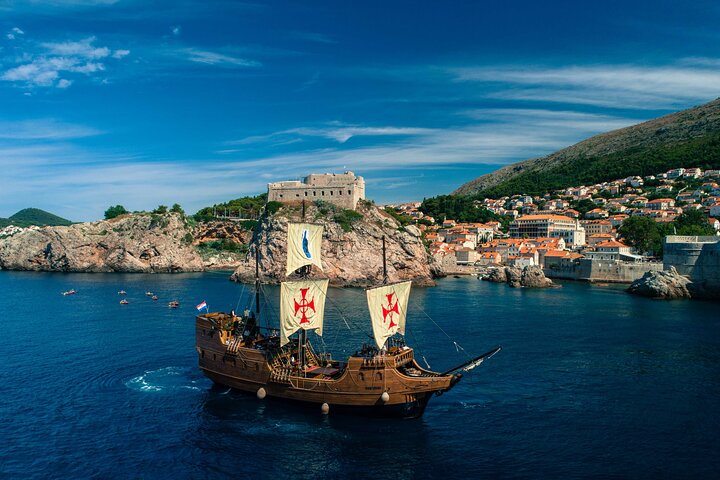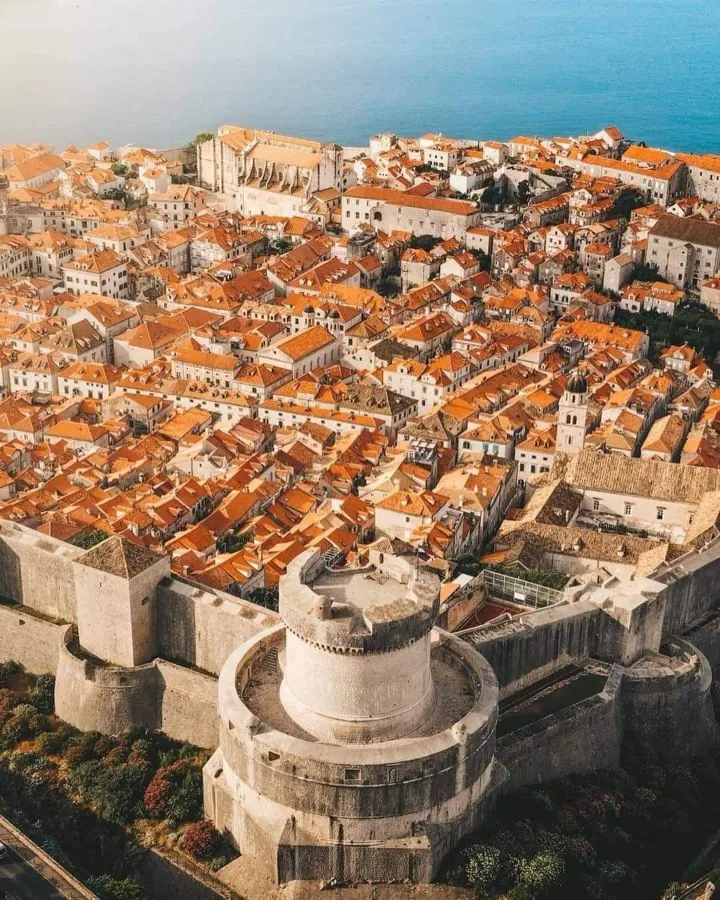Dubrovnik and its surroundings have been inhabited since the Bronze and Iron Ages, and the first known use of the term "Dubrovčani" dates back to the 12th century. So, this is a City with a rich and long history. No, don’t close the article and open another one, this history is not the “boring” one we heard about in school.
Due to its strategic location and steep cliffs (today, THE spot for sunset lovers and enjoying good wine), this City has been desired by many great military leaders throughout history. When entering Dubrovnik from the north, you will see a large and protected bay- Gruž. Today, it serves as the harbor for all the cruise ships arriving in our city. But, there's no Old Town there? Why did the people of Dubrovnik build the Old Town surrounded by open sea, rather than in the bay like all the other nations? You have to come here to understand it better.
Where did all the wealth come from?
Walking through the City, when you enter its grand walls, you’ll find many rich palaces, monasteries, squares, and administrative buildings. All of this was built during the golden age of the Republic. How?
In the 12th century, Dubrovnik established trade relations with the major commercial centers of the Venetian Republic and the Byzantine Empire. The desire for trade, profit, and progress grew stronger. By the 14th and 15th centuries, Dubrovnik, along with Venice and Ancona, was one of the most significant maritime and trading hubs in the Adriatic, and its entrepreneurial spirit helped expand its territory. Little by little, both external and internal power were established. Soon, the statehood of the Dubrovnik Republic was solidified.
At that time, the Dubrovnik merchant navy was the third largest naval force in Europe (after Spain and England), and the Republic's entire capital during its "golden age" is estimated at today’s $70 billion.
Dubrovnik’s golden age occurred during the 16th century. The foundation of its wealth came from overseas trade, as well as world-renowned shipbuilding. The most respected shipbuilding in Europe was that of the Dubrovnik Republic, Portugal, and England. Although geographically much smaller than these two massive European powers, the significance of the Dubrovnik Republic and its shipbuilding was immense. This is even visible in the works of William Shakespeare, where the term "argosy" (a Dubrovnik ship) appears.
Who was the leader, and what was the title of the position?
The foundation of government power consisted of the Grand Council of the Dubrovnik nobility, which elected two smaller councils that controlled and supervised each other. The prince was elected every month and was a nominal symbol of authority. You might wonder how the prince could be elected every month, especially when today's politicians have mandates lasting several years. What can someone do in just one month? Well... a lot, because in one month there is no time to excessively gain power. The names of the Dubrovnik princes are not well known to us. The people of Dubrovnik were very afraid of idealizing a leader, fearing that one person would become more powerful than the Republic. It didn’t matter who the leader was, but rather what would be accomplished. Honestly, we're very curious how that would look on today’s political scene...
Hi Dubrovnik, where’s your army?
And again, a "phenomenon." A small country, without its own army, perfected its defense system. How could it do that without an army? With skillful diplomacy! By maintaining neutrality in international politics, on one hand befriending the Ottoman Empire, and on the other enjoying the patronage of Spain and the Vatican, the Dubrovnik Republic cleverly preserved its independence. Its only constant enemy was its overseas neighbor, the Venetian Republic. Did you know that the wise people of Dubrovnik even gave part of their territory to the Ottoman Empire, just to avoid sharing a border with the Venetian Republic? Yes, yes... take a look at today’s map of Croatia and try to guess which territory that was. We will dedicate an entire blog post to that story.
Fun Fact time: Small but...
- Material wealth, freedom, and an organized community led to a revival, and the Renaissance reached all layers of Dubrovnik society. The Dubrovnik libertas (freedom) inspired writers, poets, and inventors for progress in many fields. That the golden age truly was gold is evident in the fact that the people of Dubrovnik were the first in Europe to abolish slavery in 1416.
- One of the first pharmacies in Europe was founded here, opened in 1317, and you can still buy medicine there today.
- In 1562, the first law regarding insurance was passed here, a whole century before Lloyd's Law.
- The first organized fire prevention and extinguishing service in Europe was established here, along with a law that required every kitchen to be on the top floor of a house. Interesting, right? It makes sense though. If a fire broke out, the residents would be able to escape more easily from a house that started burning from the roof…
- The Dubrovnik Republic was one of the first, specifically the fifth in line, to recognize the United States. It did this to establish trade relations with the New World.
- There’s more, but due to the epidemic, another Dubrovnik "product" is especially interesting. In the 15th century, Dubrovnik already had the first quarantine in the world. The authorities required the crew and goods of all ships coming from other regions to spend a month on the islands. This slowed trade but didn’t stop it, and the plague didn’t spread easily through the City.
- Small, but resilient, the Dubrovnik Republic went through many beautiful and difficult moments over the centuries. However, it overcame everything, except Napoleon! At the beginning of the 19th century, Napoleon’s occupying forces officially ended the Republic.
Explore this beautiful, history-rich City with our guide on a private tour.
Dubrovnik- City with capital C